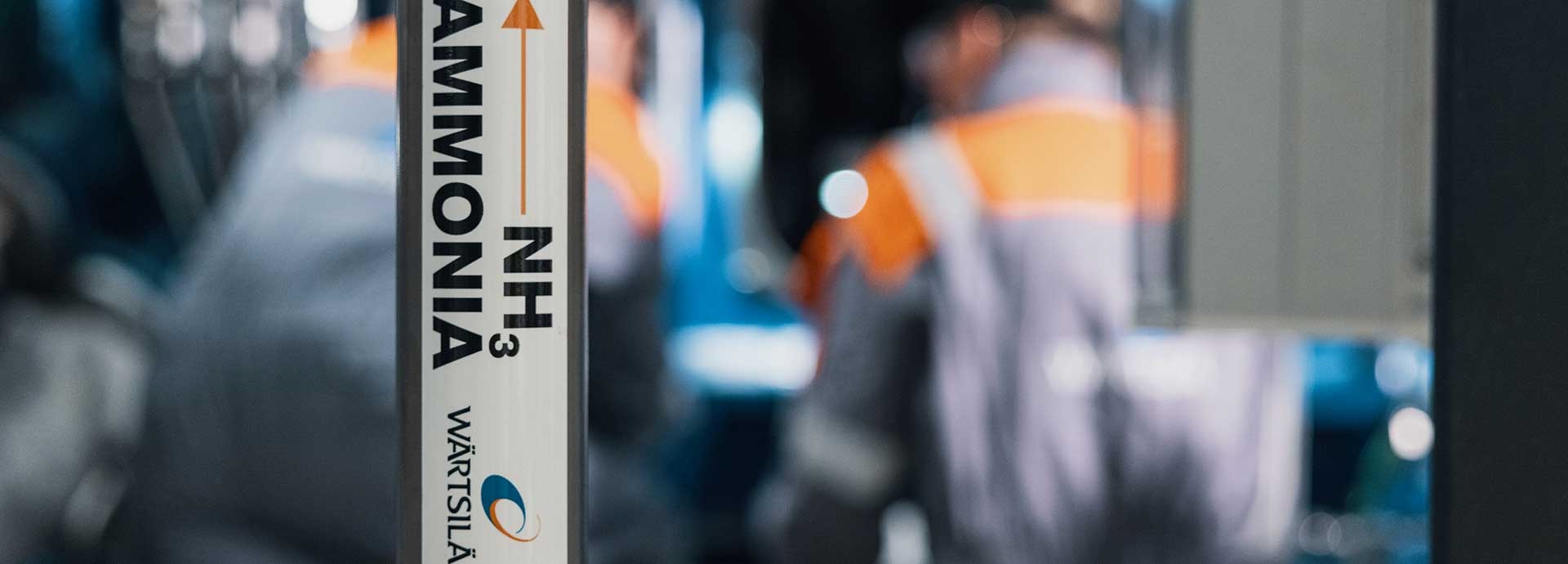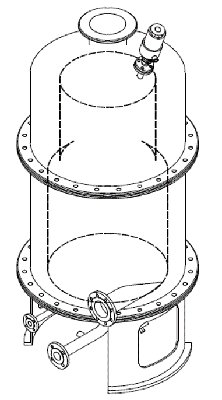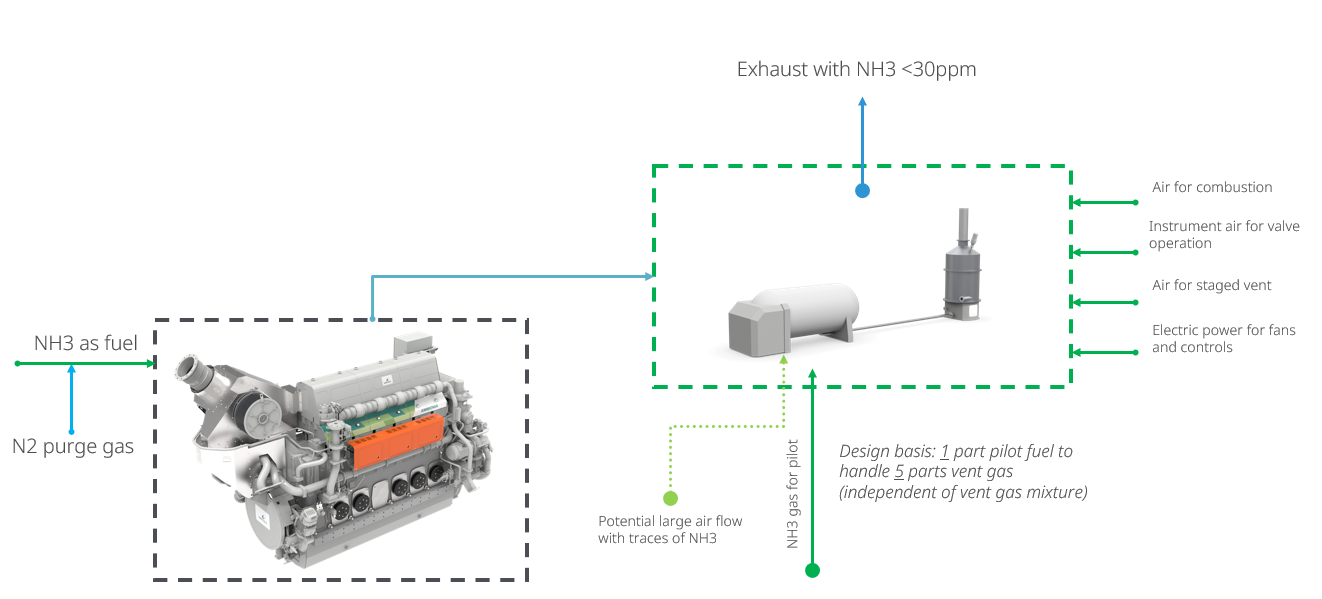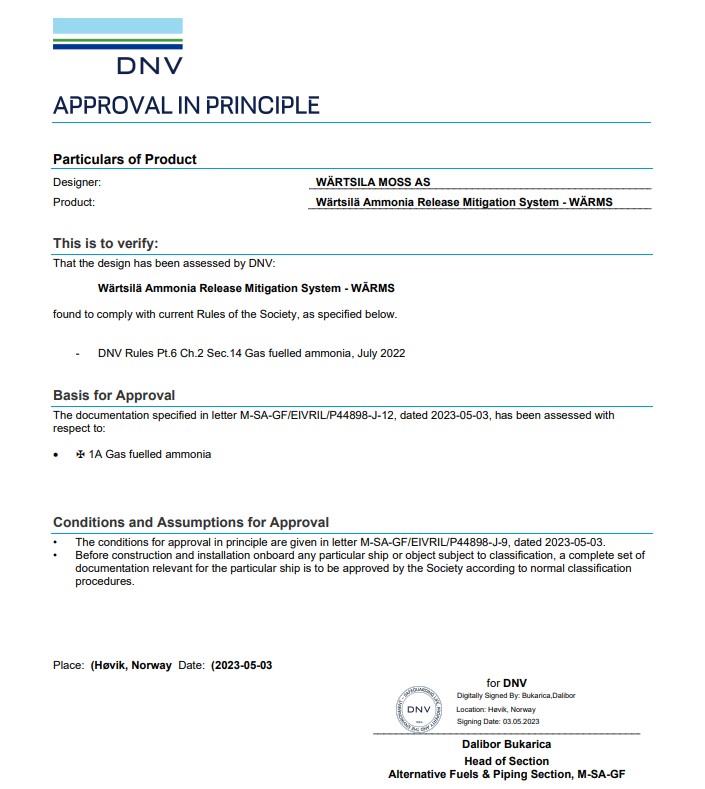

Wärtsilä Ammonia Release Mitigation System (WARMS)
Wärtsilä Gas Solutions’ innovative system mitigates the risks associated with future fuels, such as ammonia, which can be hazardous to both health and the environment unless handled and stored with great care. With WARMS, typical emissions comprise nitrogen (N2) and water (H2O), with ammonia (NH3) emissions less than 30 ppm. In fact, in most cases NH3 emissions are close to 0 ppm.
Design highlights
- Designed for IECEx certification to Zone 1 (IIC, T3, EPL Gb); Electrical and mechanical
- Custom combustion design considerations (patented) to address red flags»
- High ignition temperature? Use of high energy exciter
- Low flame speed and flame instability issues? Use of AM (3D printed) burner internals and a novel swirler to control low flame speeds, and avoid issues with offset geometry, bad tolerances etc.
- High NO emissions? Burner is designed to run rich, with low NO values (close to zero ppm)
- Possible N2O emissions? N2O emissions are calculated to be zero (<1 ppm), confirmed by testing
- NH3 slippage? NH3 slippage is in the <10ppm range, normally not detectable
- Design does not require incinerator start-up time
- Able to run on non-carbon pilot fuel, such as NH3; no fossil fuels onboard and less maintenance

WARMS integration with engine fuel supply system

The WARMS burner is not a traditional hydrocarbon-fuel based burner modified to accept NH3, it’s designed from scratch with pure NH3 as fuel in mind – with intent to avoid incidents; as with recent LH2 carrier (one able seaman away from being blown up)
Wärtsilä Gas Solutions patented and proprietary technology Wärtsilä Ammonia Release Mitigation Systems (WARMS) has received Approval in Principle from classification society DNV.
The approval in principle covers its use on ships fuelled by ammonia with the DNV Class notation gas fuelled ammonia or on gas tankers fuelled by ammonia with the DNV Class notation GF NH3.
Current status on WARMS concept

- Proven staged and controlled combustion, at Moss test facility
- NH3 as fuel kinematic model developed based on Berkeley GRI 3.0 in cooperation with academia
- Comparisons with Konnov / Gotama / S. Diego / Glarborg mechanisms, in particular for NO, NO2 and N2O formation have confirmed actual emissions with calculated
- Plug-and-play solution design for vessels with purged NH3
- Approval in Principle with DNV